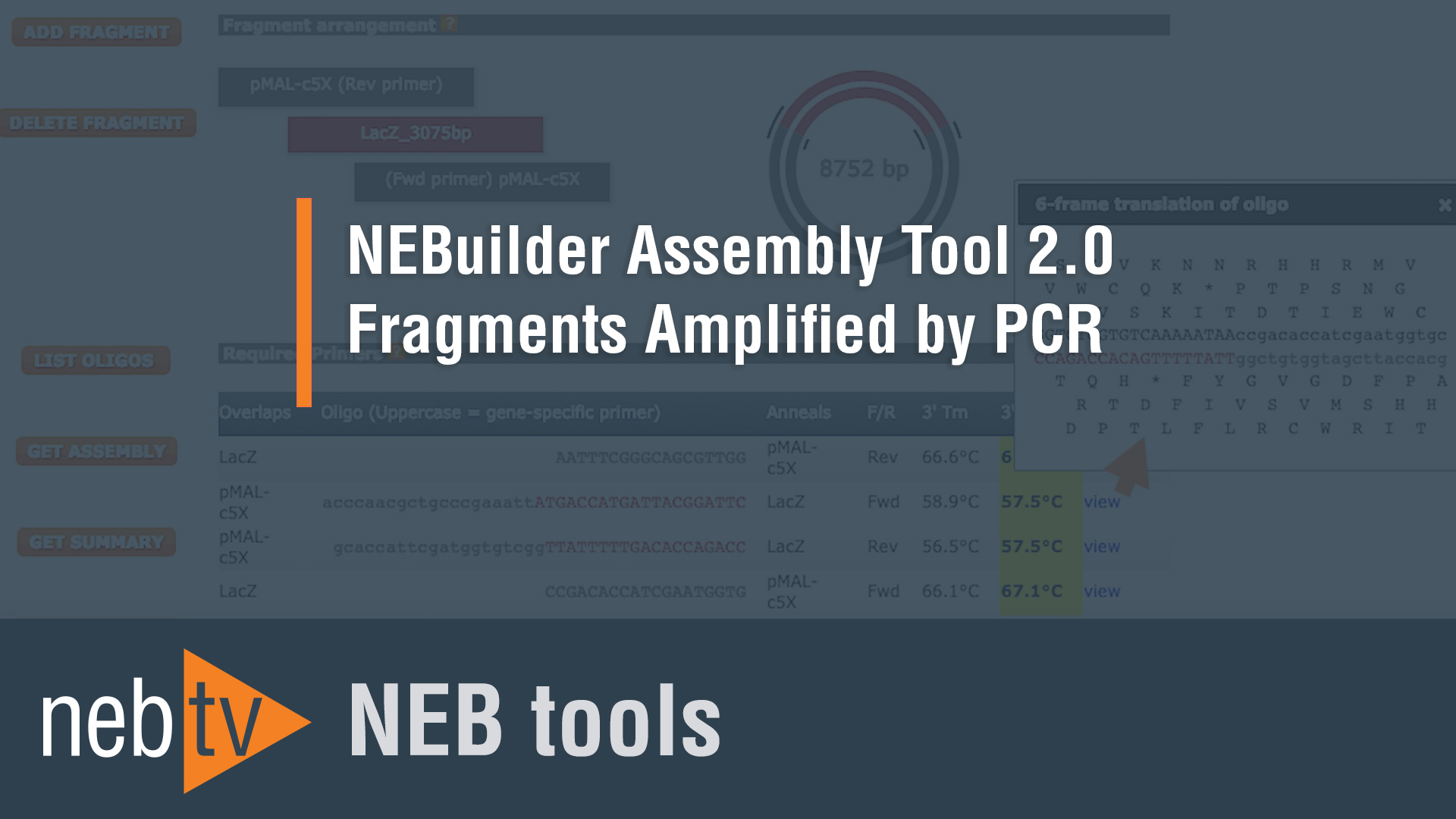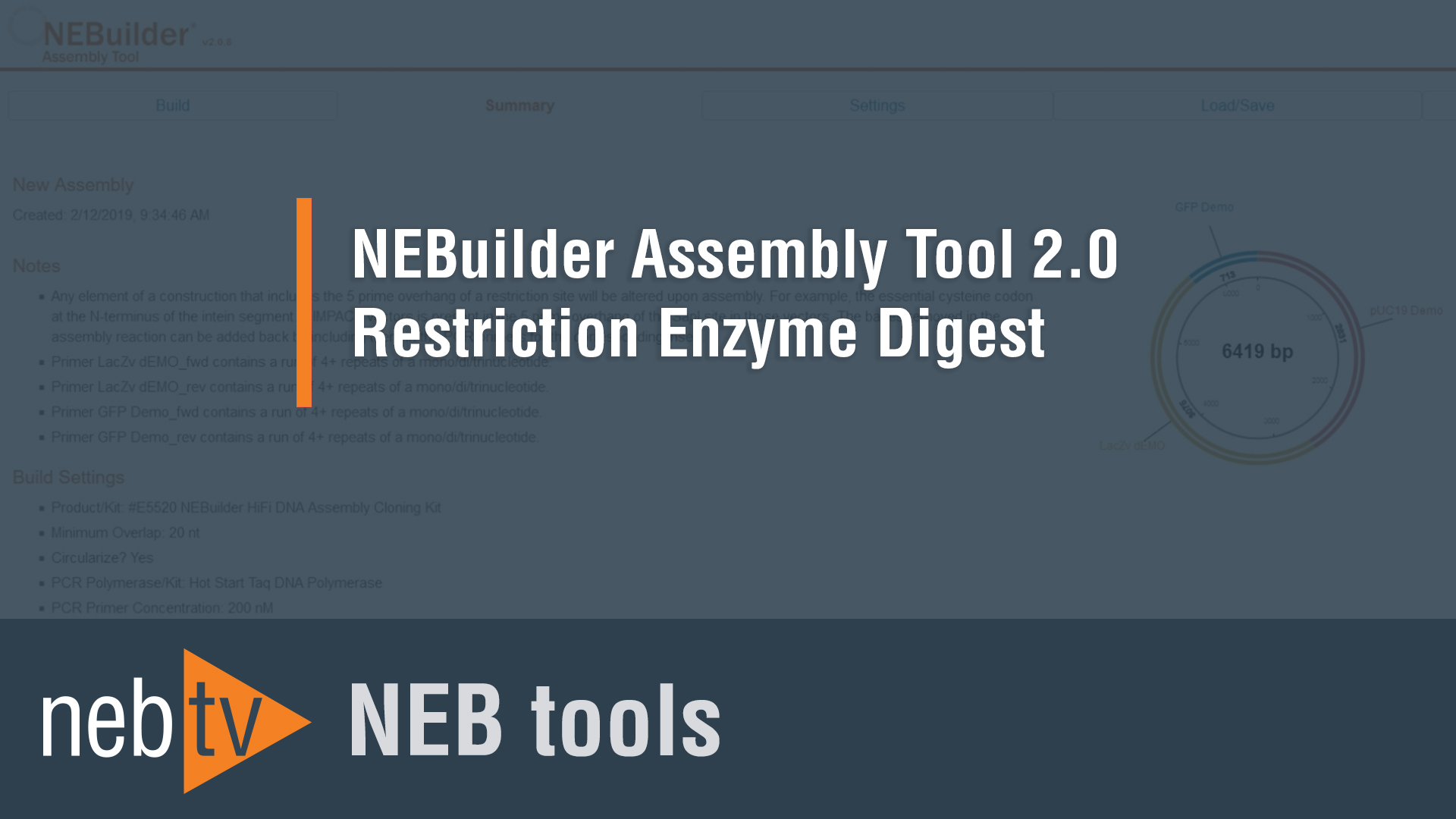NEBioCalculator® - Using the ds: mass < — > moles module to plan an NEBuilder® HiFi DNA Assembly Reaction

Script
NEBioCalculator is an easy-to-use tool that contains various modules to help with biomath calculations. In this video, we will demonstrate how to use the double-stranded DNA mass to/from moles converter to plan an NEBuilder HiFi DNA assembly reaction. The double-stranded DNA mass to/from moles converter module has two modes. The mass to moles mode converts the double-stranded DNA mass to: moles of double-stranded DNA, moles of double-stranded DNA ends, and the number of DNA molecules. The moles to mass mode converts moles of double-stranded DNA to the DNA mass. This can be useful for setting up an NEBuilder HiFi DNA assembly reaction. NEBuilder HiFi DNA assembly efficiently assembles two to six fragments of double-stranded DNA in a single reaction. An important parameter of any DNA assembly reaction is the number of DNA molecules present in the assembly.
NEBioCalculator can help convert DNA mass concentration to moles. For a two to three fragment assembly, NEB recommends using a total DNA quantity of 0.03 to 0.2 picomoles and a one to two vector to insert molar ratio. We recommend starting with 50 to 100 nanograms of vector fragment when planning a reaction. You may need to use more DNA mass when working with large vectors. In this example, we demonstrate a three fragment assembly, one vector fragment and two insert fragments. The linearized vector is 3 kb in length and the insert fragments are 500 base pair and 2 kb, including the assembly overlaps. We will first determine how much of the vector should be added to the assembly reaction. Start with the recommended 100 nanograms of vector to begin our calculations. Click on the double-stranded DNA mass to/from moles conversion button. Click on the mass to moles tab. Enter three KB for DNA length and 100 nanograms for the DNA mass.
Make sure you select the correct unit type from the pull down. NEBioCalculator tool immediately calculates that the number of moles of vector is 53.94 femtomoles or 0.0539 picomoles of vector. We can then use this to determine how much insert DNA to use. For the inserts, we need a one to two vector to insert ratio. Multiply 0.0539 picomoles of the vector by two to get 0.108 picomoles of each insert fragment. It is important to stay within the total DNA recommendation for the assembly reaction or 0.03 to 0.2 picomoles total. If we sum the total DNA for our fragments, you can see that we have greater than 0.25 picomoles of DNA, which is too much. If we repeat our calculations with less vector DNA, for example 75 nanograms, we find that we have 0.04 picomoles of vector, and 0.08 picomoles of our two fragments for a total DNA input of 0.2 picomoles, which is within the recommendations.
You may need to use a larger starting mass when working with large vector fragments greater than 6 kb. Now that we have the correct quantities of DNA fragments to add to our assembly, we can use the insert fragment lengths to calculate the mass of each insert DNA to add to the NEBuilder assembly reaction. By entering fragment length and moles, NEBioCalculator indicates we should add 24.72 nanograms of the 500 base pair fragment and 98.87 nanograms of the large 2 kb fragment. With this information, you can start setting up your NEBuilder HiFi DNA assembly reaction. Visit nebiocalculator.neb.com for more helpful bio math modules and nebuilderhifi.com for more information on NEBuilder HiFi DNA assembly.
Related Videos
-

NEBUILDER® Assembly Tool 2.0 What’s New? -

NEBUILDER® Assembly Tool 2.0 Fragments Amplified by PCR -

NEBUILDER® Assembly Tool 2.0 Restriction Enzyme Digest

